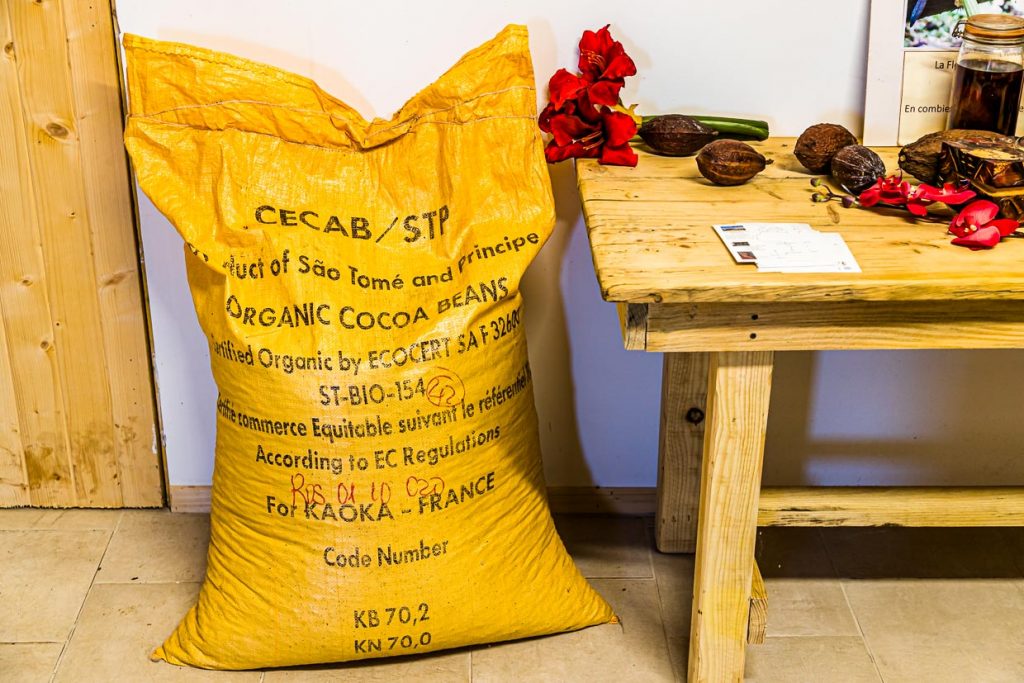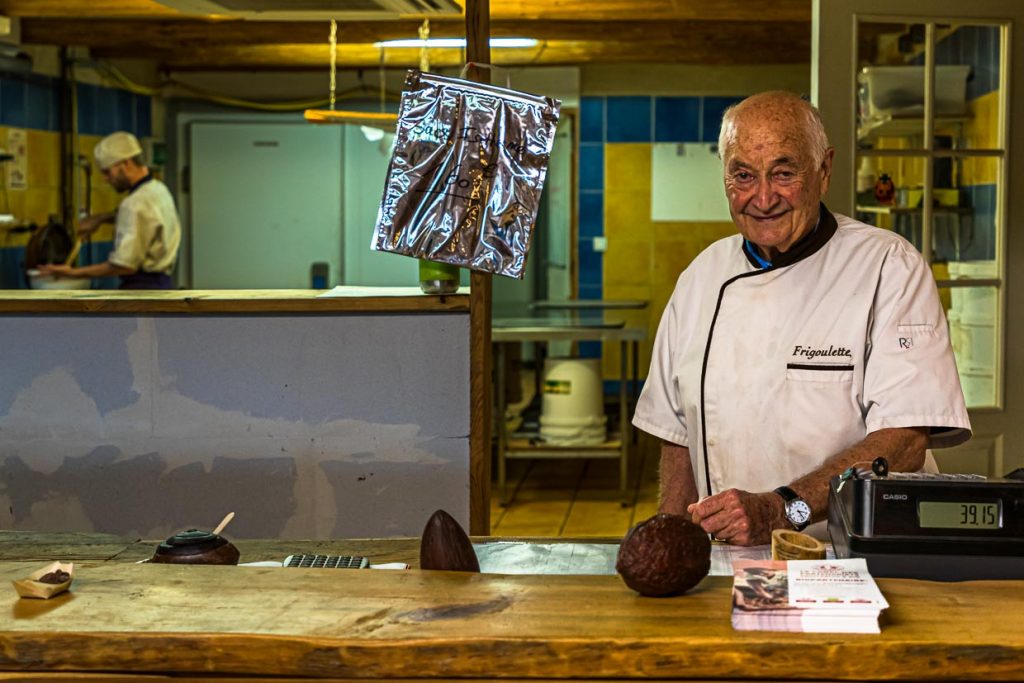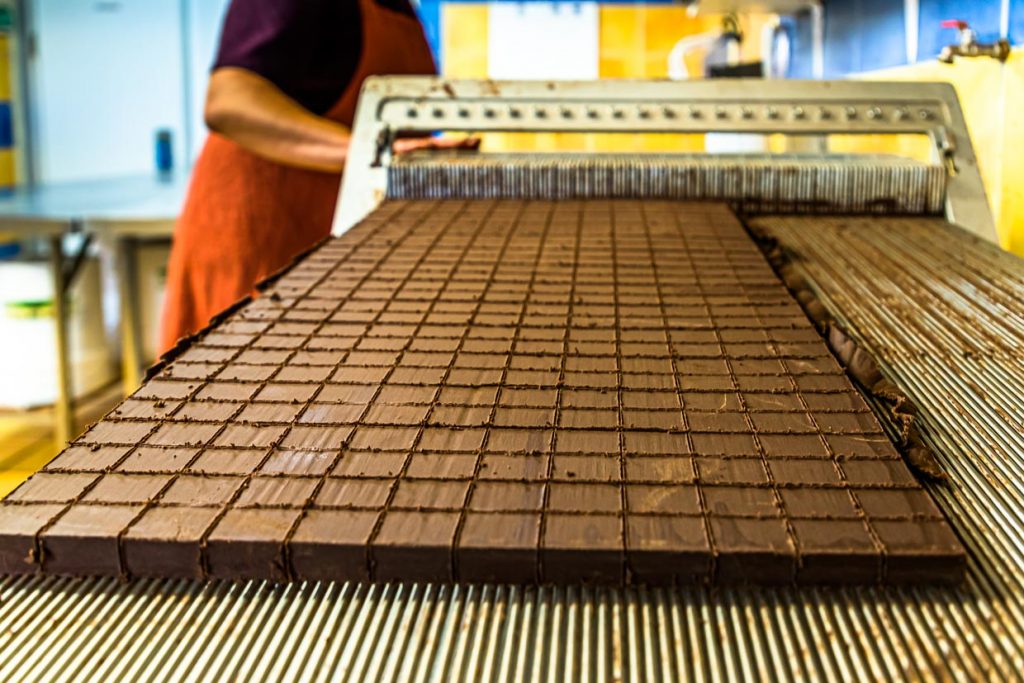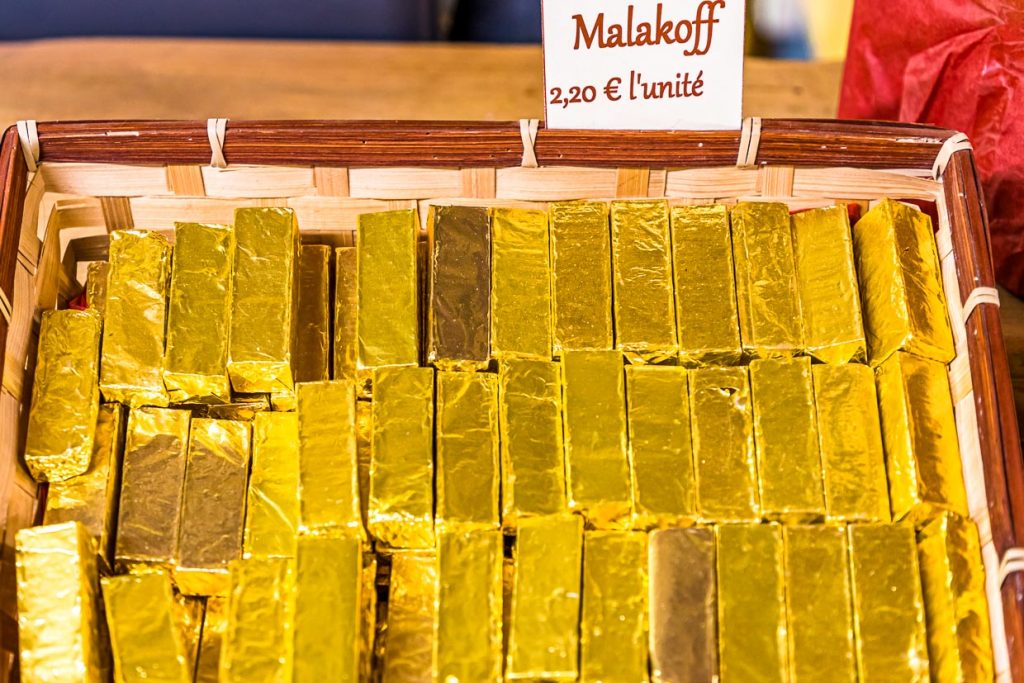It is said that chocolate came to Europe around 1550. Spaniards brought the first cocoa beans to our continent, while the Aztecs had been drinking cacaohuatl, cocoa water, for more than a thousand years, and flawless cocoa beans of the best quality were used there as a means of payment.
Chocolate, first as a hot beverage and later, with new processing methods, also in solid form, has, without exaggeration, delighted all mankind in the following centuries. On the occasion of International Chocolate Day, which for some unknown reason falls on July 7, we tell the story of Bernard Xueref. At an age when others retire, the Frenchman launches a career as a chocolatier. The trigger for his passion is a cocoa bean from São Tomé & Principe.

Sur la route du chocolat
The Frigoulette chocolate factory is located in the village of Beaufort-sur-Gervanne in the middle of the Vercors Nature Park. A winding road leads out of the village towards Frigoulette. The manufactory is named after the land where Bernard Xueref’s family has farmed for generations. The flags of France and São Tomé & Principe hang above the entrance to the wooden building. The island state in the Gulf of Guinea also bears the name Chocolate Island. In 1822, Portuguese settlers from Brazil settled on São Tomé & Principe. They brought with them cocoa plants, which thrived on the soil of volcanic origin. Soil characteristics and the favorable climatic conditions near the equator led to a cocoa boom. In 1913, cocoa cultivation on São Tomé reached its peak with 36,000 tons. Today, the island nation produces only about 3,000 tons. For company founder Bernard Xueref, an environmentally friendly and sustainable increase in productivity is an important concern.

Best Bean – Organic Grand Cru from Sao Tomé
Bernhard Xueref discovered his passion for Sao Tomé cocoa beans in 2010. It was the special aromas and the exceptionally high quality of processing and fermentation that so excited him, who had already spent his life working on agricultural issues. He describes the aroma profile of the fine cocoa from São Tomé as having notes of cinnamon, caramel and tobacco, lightly floral, slightly earthy and with little acidity. Bernard Xueref travels to São Tomé twice a year. He maintains close contacts with many protagonists on the island. Kaoka, also based on São Tomé, is the exclusive supplier of organic Grand Cru beans to Frigoulette.

Unadulterated and without milk
Frigoulette uses only cocoa beans from São Tomé and does not use animal fats such as milk, cream or butter. Palm oil is also not used. Instead, pralines and chocolates have a cocoa content of 68 percent and only cocoa butter is processed. Many products can be tasted at the counter with a view into the manufactory. Frigoulette cooking chocolates with the aroma of lavender, thyme or mint are used in French recipes.
Commitment and intercultural exchange
In 2013, Bernard Xueref bought two hectares of land on São Tomé. On the pilot plots, as he calls them, improved cultivation methods are to increase yields and thus also the income of the local farmers. School projects are being promoted, and over the years an intercultural exchange is developing between schools on São Tomé and places in the Val de Drôme such as Beaufort, Suze-sur-Crest, Plan-de-Baix and Gigors. There is a lecture room in the manufactory in Beaufort. Groups of visitors, from tourists to school classes, learn here what makes a good chocolate and that, in addition to excellent product quality, it is also important to protect nature and pay producers fairly. In just twelve years, Bernard Xueref has become an influential ambassador for Grand Cru chocolate, who is concerned with much more than just the perfect taste of chocolate.

Malakoff chocolates or the food of the gods
Theobroma is the Latin name of the cocoa fruit and means nothing less than food of the gods. If, as in the case of Frigoulette, all products are made with the best fine chocolate, one comes quite close to this ancient Latin translation in culinary terms. Chocolate, chocolates, cooking pallets made from flavored cocoa have nothing in common with the sweet stuff made from mass-produced cocoa that is on supermarket shelves. One example is the Malakoff nougat praline from Chokolaterie Frigoulette. It is available throughout France and is especially popular at Christmas. The Malakoff praline stands out from typical chocolates on the outside. It is one of the cut chocolates without an additional wrapper around the core. Handmade, Frigoulette’s bestseller is wrapped in golden paper. In summer, production for Christmas is already underway. Roasted hazelnuts give the praline a crunchy texture.
The accommodation costs in the valley of the Drôme were covered by the tourist office


















